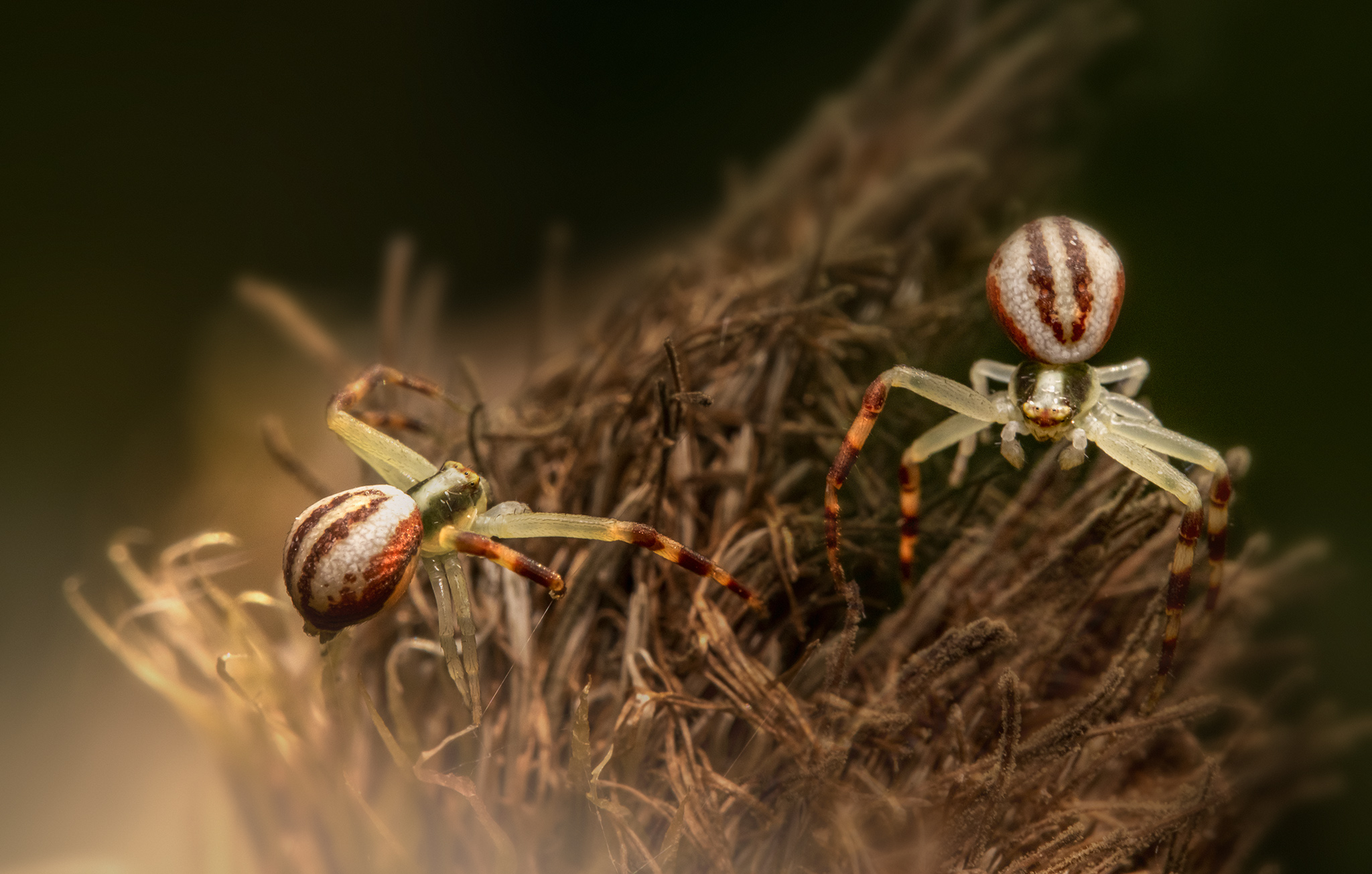Misumena vatia is a species of crab spider with a holarctic distribution. In North America, it is called the goldenrod crab spider or flower (crab) spider, as it is commonly found hunting in goldenrod sprays and milkweed plants. They are called crab spiders because of their unique ability to walk sideways as well as forwards and backwards.
[Wikipedia]
The Goldenrod Crab Spider, scientifically known as Misumena vatia, is a fascinating and highly adaptable arachnid species found across North America, Europe, and parts of Asia. Renowned for its ability to change color to match its surroundings, this spider is a master of camouflage, blending seamlessly into the flowers where it lies in wait for unsuspecting prey.
As its name suggests, the Goldenrod Crab Spider often inhabits goldenrod plants, but it can also be found on a variety of other flowering plants where it hunts for insects. This spider has a flattened body with long, slender legs that extend sideways, resembling the shape of a crab when it scuttles across the petals of a flower.
One of the most remarkable features of the Goldenrod Crab Spider is its ability to change color, allowing it to match the hues of the flowers it inhabits. Individuals can range from pale yellow to bright white or even light green, depending on the flower they are perched upon. This remarkable camouflage not only helps the spider remain hidden from predators but also allows it to ambush prey more effectively.
Despite its small size, the Goldenrod Crab Spider is a formidable predator, capable of capturing insects much larger than itself. It lies in wait on the petals of a flower, patiently scanning its surroundings with keen eyesight. When an unsuspecting insect approaches to feed on nectar or pollen, the spider strikes with lightning speed, using its powerful front legs to grasp and immobilize its prey.
Once captured, the spider injects its prey with venom, liquefying its internal organs and allowing the spider to consume the resulting slurry at its leisure. This efficient method of predation ensures that the Goldenrod Crab Spider can extract maximum nutrition from its prey while minimizing the risk of injury to itself.
Despite its predatory prowess, the Goldenrod Crab Spider faces threats from habitat loss and pesticide use, which can have detrimental effects on its populations. Conservation efforts aimed at preserving its natural habitat and raising awareness about the importance of these fascinating arachnids are crucial for ensuring their continued survival in the wild.
Views: 1051
Subscribe to the newsletter:
